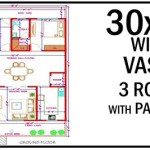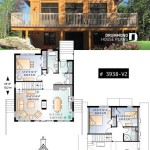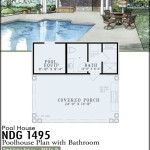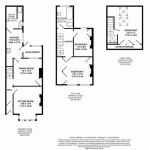Venturi House Plan: A Deep Dive into Postmodern Residential Design
The Vanna Venturi House, designed by Robert Venturi for his mother in the early 1960s, stands as a pivotal work in postmodern architecture. More than just a home, it serves as a manifesto challenging the prevailing orthodoxy of modernist architecture. This article explores the key elements of the Venturi House plan, analyzing its innovative features and enduring influence on residential design.
The house's deceptively simple exterior masks a complex interplay of historical references and deliberate contradictions. Its facade features a prominent broken pediment, a clear reference to classical architecture, yet rendered in a stylized, almost cartoonish manner. This playful manipulation of traditional forms became a hallmark of postmodernism.
The front elevation presents a surprising flatness, enhanced by the application of applied ornament and the shallow recessed entryway. This contradicts the modernist emphasis on transparency and the honest expression of structure. The prominent chimney, oversized and centrally located, further underscores the playful subversion of functional elements.
Moving beyond the facade, the Venturi House plan reveals a carefully orchestrated sequence of interior spaces. The entry, deliberately compressed and narrow, creates a sense of anticipation before opening into a surprisingly expansive living area. This manipulation of scale and spatial experience became a recurring theme in Venturi's later work.
The interior layout challenges conventional notions of domestic space. The dining room is placed at the front of the house, adjacent to the entry, rather than the rear, as was typical in traditional homes. This unconventional placement reflects Venturi's rejection of functionalist dogma and his embrace of complexity and ambiguity.
Another notable feature of the Venturi House plan is the staircase. Monumental and centrally located, it dominates the interior space and serves as a visual anchor. Its prominent placement contrasts with the more utilitarian approach to staircases in modernist architecture, further emphasizing the postmodern emphasis on symbolism and ornament.
The use of windows throughout the house also breaks from modernist conventions. Rather than large, uninterrupted expanses of glass, the Venturi House features a variety of window sizes and shapes, strategically placed to frame specific views and control the flow of natural light. This approach reflects a more nuanced understanding of the relationship between interior and exterior space.
The Venturi House plan utilizes traditional architectural elements in unexpected ways. The application of applied ornament, the manipulation of scale, and the deliberate use of historical references all contribute to a sense of playful irony. This approach challenges the modernist emphasis on purity and functionalism.
The influence of the Venturi House on subsequent residential design is undeniable. It paved the way for a generation of architects who embraced complexity, ornament, and historical references. The house's playful subversion of modernist conventions helped to legitimize a more diverse and inclusive approach to architecture.
Studying the Venturi House plan provides valuable insights into the evolution of architectural thought. It demonstrates the power of architecture to challenge established norms and inspire new ways of thinking about space, form, and function.
The deliberate contradictions and complexities embedded within the Venturi House plan offer a rich field of study for architects and design enthusiasts. From the manipulated scale of the chimney to the unconventional placement of the dining room, every element of the house contributes to its unique character and enduring legacy.
Beyond its formal innovations, the Venturi House also represents a shift in architectural philosophy. It embraces the complexities of human experience and rejects the utopian ideals of modernism. The house acknowledges the importance of context, history, and cultural meaning in the creation of meaningful architecture.
The Venturi House plan serves as a powerful reminder that architecture is not simply about function, but also about communication and expression. It demonstrates the ability of architecture to tell stories, evoke emotions, and challenge our perceptions of the built environment.
By carefully analyzing the Venturi House plan, one can gain a deeper understanding of the postmodern movement and its impact on contemporary architecture. The house's enduring influence can be seen in the work of countless architects who have embraced its playful spirit and its commitment to complexity and diversity.
The Venturi House remains a relevant and thought-provoking example of residential architecture. Its innovative design continues to inspire debate and discussion, reminding us of the power of architecture to shape our understanding of the world around us.

Ad Classics Vanna Venturi House Robert Archdaily

Postmodernism Vanna Venturi House By Robert

The Smallish Vanna Venturi House Project Small

Postmodernism Vanna Venturi House By Robert

File Vanna Venturi Ground Floor Plan Cropped Jpg Wikimedia Commons
The Vanna Venturi House S New Owner Settles Into Postmodern Icon Architect

Vanna Venturi House Robert

House Vanna Robert Venturi In Autocad Cad 651 08 Kb Bibliocad

Postmodernism Vanna Venturi House By Robert

Eth Zürich Prof A Caruso Archive References Vanna Venturi House Architectural Inspiration








